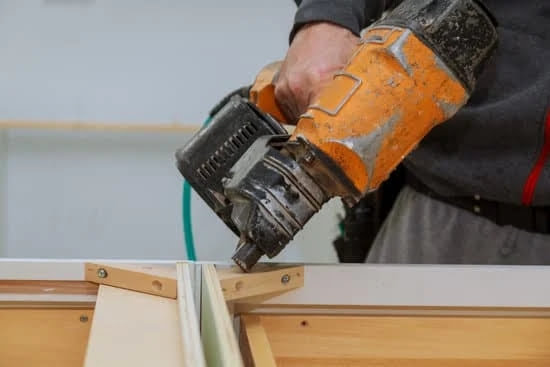A woodworking gouge chisel is an essential tool for any woodworker. It is a versatile cutting tool that helps to shape, carve, and smooth wood surfaces. With its curved blade and beveled edges, the gouge chisel allows for precise and controlled removal of material, allowing woodworkers to create intricate details and complex designs.
Woodworking gouge chisels have been used for centuries and have a rich history in the craft of woodworking. They were first developed in ancient Egypt and have since evolved into various types and shapes to accommodate different woodworking tasks. From creating deep grooves and hollows to carving intricate patterns, these chisels are prized for their ability to bring life and character to wooden structures.
In addition to their historical significance, woodworking gouge chisels play a crucial role in modern woodworking projects. Their applications range from carving furniture details and shaping bowls to sculpting figurines and creating decorative elements on cabinets or doors. Whether you are a professional woodworker or a hobbyist, owning a set of quality gouge chisels is essential for taking your woodworking skills to the next level.
In the following sections of this article, we will delve deeper into the world of woodworking gouge chisels. We will explore the different types available, provide recommendations on choosing the right one for your specific needs, offer techniques for using them effectively, discuss maintenance and sharpening methods, identify common mistakes to avoid when using them, showcase inspiring projects where gouge chisels were used prominently, provide tips for caring for and storing them properly.
So let’s begin our journey into the fascinating realm of woodworking gouge chisels.
Types of Woodworking Gouge Chisels
Woodworking gouge chisels come in a variety of types and shapes to suit different woodworking projects. Each type of gouge chisel has a specific purpose and use, making it important to understand the differences between them in order to select the right tool for the job.
- V-Parting Gouge: This type of gouge chisel has a V-shaped cutting edge, making it ideal for creating grooves or channels in wood. It is commonly used for carving decorative patterns or adding texture to a piece.
- Fishtail Gouge: The fishtail gouge features a narrow cutting edge with flared sides, resembling the shape of a fish’s tail. It is commonly used for shaping concave curves such as bowls or statues.
- Spoon Gouge: As the name suggests, this type of gouge chisel has a curved cutting edge that resembles a spoon shape. It is frequently used for hollowing out surfaces, such as carving spoons or bowls.
- Flat Straight Gouge: This gouge chisel has a straight cutting edge with no curvature. It is well-suited for removing material quickly and efficiently, making it useful for rough shaping or stock removal.
- Swan Neck Gouge: The swan neck gouge features an elongated handle with a bend towards the blade. This design allows for greater visibility and control when working on intricate details or hard-to-reach areas.
When selecting a woodworking gouge chisel, consider factors such as the specific task at hand, the desired level of detail, and personal preference. For example, if you are looking to create delicate details on your project, a spoon gouge or fishtail gouge may be more appropriate. On the other hand, if you need to remove larger amounts of material quickly, a flat straight gouge or V-parting gouge may be better suited.
It is also important to choose a quality and reputable brand when purchasing gouge chisels. Some recommended brands for woodworking gouge chisels include Stanley, Narex, and Two Cherries. These brands are known for their durable and high-quality tools, ensuring that your gouge chisel will perform well and last for years to come. Gouge chisels can be purchased from specialty woodworking stores, online retailers, or directly from the manufacturer’s website.
Choosing the Right Woodworking Gouge Chisel
Factors to consider when selecting a woodworking gouge chisel
Choosing the right woodworking gouge chisel is essential for achieving desired results in your projects. There are several factors that you should consider before making a purchase:
- Size and Shape: The size and shape of the gouge chisel play a crucial role in determining its functionality. Smaller chisels with narrow profiles are suitable for intricate detailing work, while larger chisels are ideal for removing bulk material. Different shapes, such as straight, curved, or V-shaped, cater to specific cutting needs.
- Material: The material of the gouge chisel impacts its durability and performance. High-quality chisels are typically made from high-carbon steel or tool steel. These materials offer excellent edge retention and can withstand heavy use without losing their sharpness.
- Handle: The handle of the gouge chisel should be comfortable to hold for extended periods of time. Look for handles made from durable hardwood or ergonomic synthetic materials that provide a secure grip and reduce hand fatigue.
- Budget: Consider your budget when choosing a woodworking gouge chisel. While it’s important to invest in a quality tool, there are options available at various price points.
Tips and guidelines for choosing the appropriate size, shape, and material
To select the right woodworking gouge chisel for your specific needs:
- Evaluate your projects: Determine the type of woodworking projects you will be working on most frequently. If you primarily focus on intricate carving or detail work, opt for smaller sized gouge chisels with narrower profiles. For larger-scale shaping or roughing out tasks, choose wider and larger ones.
- Seek expert advice: If you’re unsure about which type of gouge chisel to choose, consult experienced woodworkers or professionals in the field who can offer guidance based on their expertise and personal recommendations.
- Test the chisel: Whenever possible, try out different gouge chisels before making a purchase. This will allow you to assess the feel, weight, and balance of the tool in your hand.
- Consider reputable brands: Research reputable brands known for their quality woodworking tools. These brands typically have a track record of producing reliable and durable gouge chisels that are worth investing in.
Recommendations on where to purchase quality gouge chisels
Finding quality woodworking gouge chisels can be done through various channels:
- Woodworking specialty stores: Visit local woodworking specialty stores or hardware stores that carry a wide range of tools specific to woodworkers.
- Online marketplaces: Online platforms, such as Amazon or eBay, offer a vast selection of woodworking tools, including gouge chisels. Read customer reviews and ratings to ensure the credibility and reliability of the seller.
- Directly from manufacturers: Some manufacturers sell their products directly through their websites or authorized dealers. This can be a great option if you’re looking for specific brands or custom-made gouge chisels.
Remember to prioritize quality over price when purchasing woodworking gouge chisels. Investing in a reliable and well-made tool will save you money in the long run by providing better performance and longer durability.
Techniques for Using a Woodworking Gouge Chisel
Using a woodworking gouge chisel requires proper technique and skill to achieve clean and precise cuts. Whether you are a beginner or an experienced woodworker, the following step-by-step instructions and tips will help you effectively use a gouge chisel for different woodworking tasks.
- Prepare your workpiece: Before using a gouge chisel, make sure your workpiece is securely clamped to prevent any movement while you work. This will ensure stability and accuracy in your cuts.
- Grip the handle correctly: Hold the handle of the gouge chisel firmly with your dominant hand, placing your thumb on top of the handle for better control. Your other hand should support the back of the blade near the cutting edge.
- Start with shallow cuts: Begin by applying light pressure with the gouge chisel to make shallow cuts on your workpiece. Gradually increase the depth of each cut as you gain more confidence and control.
- Use controlled movements: When using a gouge chisel, it’s important to use controlled movements rather than forceful ones. Push or pull the chisel along the grain of the wood in smooth, even strokes to achieve clean and accurate cuts.
- Watch your angles: Pay attention to the angle at which you hold the gouge chisel relative to the surface of your workpiece. The angle will determine how deep and wide each cut is, so be mindful of this as you work.
- Practice different techniques: Experiment with different techniques such as slicing, paring, or shaping to achieve desired results with your gouge chisel. Each technique requires varying degrees of pressure and motion, so practice until you feel comfortable with each one.
- Maintain sharpness: A sharp gouge chisel is essential for achieving clean cuts in woodwork. Regularly sharpen and hone the blade to maintain its sharpness. This will not only improve the quality of your work but also make it easier to control the chisel.
Remember, safety should always be a priority when using a gouge chisel. Use appropriate safety gear such as goggles and gloves, and be cautious of your surroundings to prevent accidents. With practice and patience, you can master the techniques for using a woodworking gouge chisel and create beautiful woodwork projects.
Maintenance and Sharpening of Woodworking Gouge Chisels
Woodworking gouge chisels are essential tools for any woodworking enthusiast. To ensure their longevity and optimal performance, it is important to regularly maintain and sharpen these chisels. Proper maintenance not only increases the lifespan of the tools but also ensures clean and precise cuts in your woodworking projects.
Regular maintenance involves cleaning and oiling your gouge chisels after each use. This helps prevent rust and keeps the blades in optimal condition. To clean the blades, simply wipe them with a soft cloth or rag to remove any debris or dust. For stubborn dirt or residue, you can use a small amount of mild soap mixed with warm water.
Sharpening a gouge chisel requires specific techniques and tools. It is important to have a sharp blade for efficient cutting and carving. One common method of sharpening a gouge chisel is using a slipstone. A slipstone is a tapered stone that matches the curvature of the gouge blade, allowing you to easily sharpen both the inside bevel and outside bevel.
To sharpen your gouge chisel with a slipstone, hold the slipstone against the inside bevel of the blade at an angle that matches the existing bevel. Using circular motions, move the stone along the entire length of the bevel until it feels sharp. Repeat this process on the outside bevel as well.
Another tool commonly used for sharpening gouge chisels is a honing guide paired with either sandpaper or diamond stones. The honing guide helps maintain consistent angles while sharpening. Simply secure your gouge chisel inside the honing guide, choose an appropriate grit sandpaper or diamond stone, and slide it back and forth over both bevels until you achieve a sharp edge.
Regularly maintaining and sharpening your woodworking gouge chisels will ensure they remain in excellent working condition, allowing you to create clean and precise cuts in your woodworking projects. Remember to always take proper safety precautions when sharpening your tools, such as wearing protective gloves and goggles. With sharp gouge chisels, you can take your woodworking skills to the next level.
Common Mistakes to Avoid When Using a Woodworking Gouge Chisel
Applying too much pressure
One common mistake that beginners make when using a woodworking gouge chisel is applying too much pressure during the cutting process. It is important to remember that gouge chisels are designed to remove material gradually and smoothly, not by exerting excessive force. Applying too much pressure can result in rough and uneven cuts, and can even cause the chisel to slip or dig into the wood.
To avoid this mistake, it is crucial to let the sharpness of the chisel do the work. Hold the chisel with a firm grip but apply gentle and controlled pressure while making cuts. Allow the cutting edge to slowly penetrate into the wood while maintaining control over its movement. By doing so, you will achieve cleaner and more precise cuts with your gouge chisel.
Incorrect sharpening technique
Another common mistake that woodworkers make is using incorrect sharpening techniques for their gouge chisels. Sharpening a gouge chisel requires attention to detail and proper technique in order to maintain its effectiveness and longevity.
When sharpening a gouge chisel, it is important to maintain its original shape and be mindful of its bevel angle. Using a sharpening stone or honing guide that matches the curved shape of the chisel can help achieve consistent results. Take your time and follow proper sharpening procedures, such as keeping a consistent angle while moving the chisel back and forth across the stone.
Not wearing safety gear
Using any type of woodworking tool without wearing appropriate safety gear is a big mistake that should be avoided at all costs, especially when working with a gouge chisel. The sharp edge of the chisel can easily cause injuries if not handled properly.
Always wear safety goggles to protect your eyes from flying debris or wood particles while using a gouge chisel. Additionally, wearing gloves can provide an extra layer of protection for your hands. It is also important to secure the workpiece properly before making any cuts to prevent accidents or slippage.
By investing in safety gear and taking proper precautions, you can ensure your woodworking experience with a gouge chisel remains safe and enjoyable.
Inspiring Woodworking Projects Using Gouge Chisels
Woodworking projects that utilize gouge chisels provide an opportunity for woodworkers to showcase their creativity and craftsmanship. The versatility of gouge chisels allows for the creation of intricate designs, textures, and details that can enhance the beauty of woodwork. From relief carving to sculpting, here are some inspiring woodworking projects where gouge chisels are prominently used:
- Relief Carving: Gouge chisels are commonly used in relief carving to create three-dimensional artwork on a flat surface. This technique involves removing layers of wood to create depth and texture. Gouges with different sweeps and sizes allow the woodworker to achieve various effects such as smoothly curved surfaces or rough textures that mimic natural elements like fur or feathers.
- Bowl and Spoon Carving: Gouge chisels are essential tools for creating functional items like bowls and spoons. The concave shape of a gouge allows for hollowing out the interior of a bowl or shaping the curvature of a spoon. Different sizes and shapes of gouges are utilized for achieving specific contours and finishing touches.
- Sculpture: Gouge chisels also play a vital role in sculpting wood into artistic figures or forms. Whether it’s creating realistic animal sculptures or abstract pieces, gouges can be used to shape and define the desired details and features of the sculpture.
By incorporating gouge chisels into these woodworking projects, artisans are able to add depth, dimension, and character to their creations. The use of gouges allows for precise control over shaping and carving, enabling woodworkers to bring their visions to life with stunning results.
Take note that while these woodworking projects may seem intricate, they can be attempted by woodworkers at various skill levels. Beginners can start with simpler designs, gradually progressing towards more complex creations as their skills develop. Advanced woodworkers can experiment with different techniques and combine them with other woodworking tools for more elaborate and unique pieces.
Whether you are a seasoned woodworker or just starting out, incorporating gouge chisels into your woodworking projects opens up a world of possibilities for creating stunning and inspiring pieces that truly showcase the beauty of wood.
Tips for Caring and Storing Woodworking Gouge Chisels
In conclusion, caring for and properly storing your woodworking gouge chisels is essential for maintaining their lifespan and ensuring they are ready for use whenever you need them. By following a few simple tips and guidelines, you can keep your gouge chisels in excellent condition and prevent any accidents or damage.
Firstly, it is crucial to regularly clean your gouge chisels after each use. Woodworking projects can leave behind residue, such as sap or dust, which can accumulate on the chisel blades. Use a soft cloth or brush to remove any debris from the blade and handle before storing them away. This will help prevent any buildup that could potentially affect the performance of the chisel.
Another important aspect of caring for gouge chisels is sharpening them regularly. A dull blade not only hampers your woodworking efforts but can also lead to accidents by requiring excessive force to make cuts. Invest in proper sharpening tools and follow the recommended techniques to maintain a razor-sharp edge on your gouge chisels.
When it comes to storage, it is crucial to protect the cutting edge of your gouge chisels by using blade guards or sheaths. These accessories will prevent accidental contact with the sharp edges while also protecting them from any potential damage during storage.
Additionally, consider investing in a dedicated storage solution for your gouge chisels, such as a tool roll or wall-mounted rack. This will keep them organized and easily accessible while minimizing the risk of accidental damage from being thrown into a toolbox or drawer with other tools.
By taking these steps to care for and store your woodworking gouge chisels, you will ensure that they remain in optimal condition, ready for use whenever you need them. Remember, proper maintenance not only prolongs their lifespan but also contributes to safer and more efficient woodworking projects.
Frequently Asked Questions
What is a gouge chisel used for?
A gouge chisel is a woodworking tool that is used for shaping and carving wood. It typically has a curved or rounded cutting edge, with the shape and size of the curve varying depending on the specific type of gouge chisel.
Gouge chisels are commonly used to create detailed designs, remove large areas of wood, or sculpt intricate patterns in wood surfaces.
What is the difference between a wood gouge and a chisel?
While both a wood gouge and a chisel are tools used for woodworking, there are some key differences between them. A chisel typically has a straight cutting edge and is mainly used for cutting or paring away material from the surface of wood. It is often used for tasks such as creating clean joints, trimming edges, or smoothing surfaces.
On the other hand, a wood gouge has a curved cutting edge that allows it to remove material in a more controlled and precise manner. Gouges are primarily used for carving, shaping concave or convex surfaces, or creating intricate details in wooden objects.
What is the difference between a veiner and a gouge?
The difference between a veiner and a gouge lies in their respective cutting edges and intended usage. A veiner is a type of gouge that has an extremely narrow, deeply curved cutting edge resembling a U-shape or V-shape. This unique shape allows it to create very fine lines and highlights in woodcarving projects, making it ideal for delicate work like creating veins in leaves or adding intricate details to sculptures.
In contrast, a standard gouge usually has a broader curve on its cutting edge and is designed for general carving purposes such as shaping contours or roughing out larger areas of wood quickly. So while both tools share similarities as types of gouges, their specific uses differ due to the variations in their cutting edges.

Hi everyone! I’m a woodworker and blogger, and this is my woodworking blog. In my blog, I share tips and tricks for woodworkers of all skill levels, as well as project ideas that you can try yourself.





